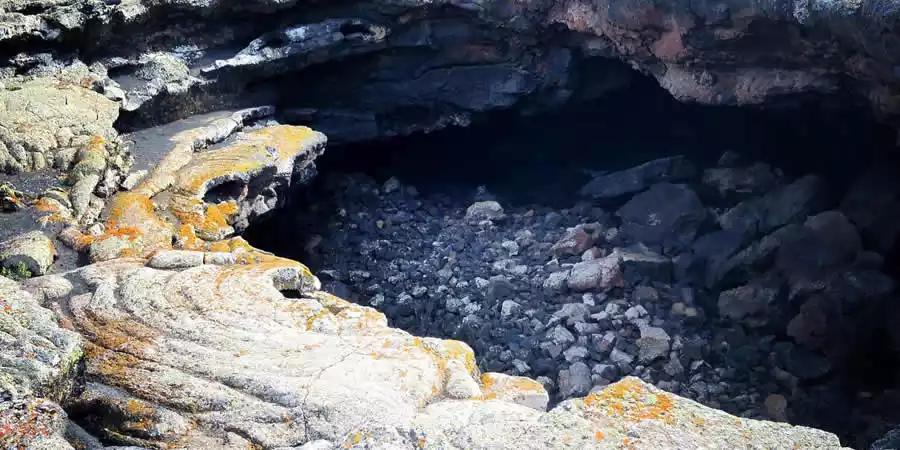
The Cueva de los Naturalistas Natural Monument, located a few hundred meters from Masdache, in the direction of Tinajo, comprises 1,600 m of underground gallery and 2.1 hectares of surface and It was classified in 1994 as a Natural Monument. It is located in the subsoil of the protected landscape of La Geria.
This volcanic tube, also known as Cueva de Las Palomas, is a sample of the valuable subsoil found on the island of Lanzarote. This cave is located near the town of Masdache, on the side of the local road that runs towards La Vegueta. It is located in a large lava lake formed by the Tizalaya volcano, in the last phases of the eruptions that occurred between 1730 and 1736. It is perfectly passable (with due precautions). Innumerable ramifications depart from this wide cavity, forming galleries and rooms of great beauty and scientific interest, difficult to access due to the quality of the rock on the floor.
It is characterized by a high degree of conservation since it is a catalog of all the characteristic morphologies in this type of cave, for example the cornices, the central columns, the lava platforms or the staphylites, the ones that have the best conservation in the Canary Islands.
The entire volcanic tube, as well as the vineyards planted in the cracks of the surrounding lava lake, represent one of the landscapes most spectacular Lanzarote.
We start the route from the car park on the right bank heading northeast, then go underground to the exit on the other side of the road, through which we will surface to return to the vehicle.
It is recommended to obtain the topography of the cave since it has several catholes and branches, some of which are connected to other areas of the cave and others are not. The tube is damaged. Consisting of several galleries in which partial collapses of the ceiling and jameos can be observed.
Inside you can see characteristic structures of this type of cavities: fronts of lava rivers, lateral terraces and curious staphylite formations (solidified drops of lava in the form of clusters of more than 5 cm in length) created by the lava when it solidified.
Be very careful not to break more staphylites, they are very peculiar formations and not very abundant in the caves of the Canary Islands.
There is no fauna and flora inside the cave, we can only find it at the entrances. In the surrounding lava fields there are extensive communities of lichens and good representations of bejeques.
These tunnels are caused by rivers of fluid lava that after solidifying on the surface continue to flow inside, giving rise to underground lava rivers, once the emission ends. the level of lava inside descends until it disappears, forming a volcanic tunnel.